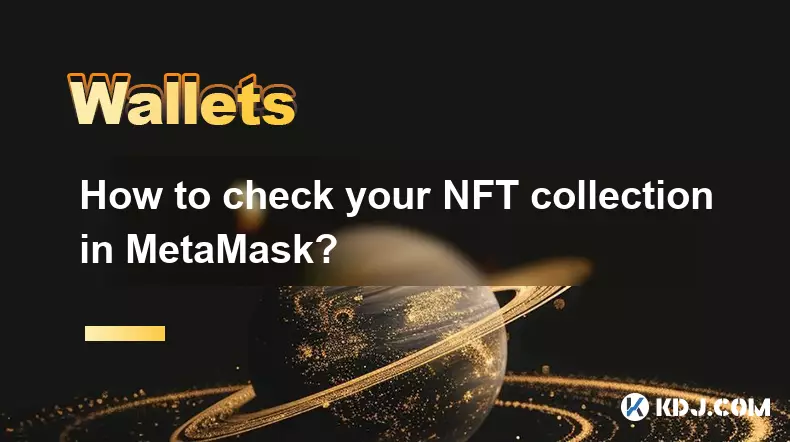-
 bitcoin
bitcoin $100977.009184 USD
-2.05% -
 ethereum
ethereum $3282.009150 USD
-3.23% -
 tether
tether $0.999813 USD
-0.02% -
 xrp
xrp $2.208254 USD
-4.89% -
 bnb
bnb $951.411089 USD
0.55% -
 solana
solana $155.761205 USD
-2.84% -
 usd-coin
usd-coin $1.000217 USD
0.02% -
 tron
tron $0.284475 USD
-1.28% -
 dogecoin
dogecoin $0.162363 USD
-1.53% -
 cardano
cardano $0.533988 USD
-0.47% -
 hyperliquid
hyperliquid $39.174339 USD
-3.22% -
 chainlink
chainlink $14.724828 USD
-1.16% -
 bitcoin-cash
bitcoin-cash $477.297986 USD
-1.28% -
 zcash
zcash $554.227426 USD
17.30% -
 ethena-usde
ethena-usde $0.998995 USD
-0.03%
Is Your Crypto Safe? A Comprehensive Wallet Security Checklist
Crypto wallets secure your private keys, but staying safe requires using cold storage, protecting seed phrases, enabling 2FA, and avoiding phishing scams.
Nov 04, 2025 at 10:00 pm

Understanding the Foundation of Crypto Wallet Security
1. Cryptocurrency wallets, whether hot or cold, serve as digital vaults for private keys that grant access to blockchain assets. Without proper protection, these keys are vulnerable to theft and exploitation. The foundation of wallet security begins with understanding how different wallet types operate and what risks they inherently carry.
2. Hot wallets, connected to the internet, offer convenience but expose users to online threats such as phishing, malware, and man-in-the-middle attacks. These wallets are best suited for small amounts used in frequent transactions.
3. Cold wallets, like hardware or paper wallets, store private keys offline, drastically reducing exposure to cyberattacks. They are ideal for long-term storage of significant holdings, though physical loss or damage remains a concern.
4. Regardless of type, every wallet relies on seed phrases—typically 12 or 24 words—that can regenerate private keys. Protecting this phrase is paramount; anyone who obtains it gains full control over the associated funds.
5. Users must avoid storing seed phrases digitally, including screenshots, cloud backups, or text files. Physical storage in fireproof and waterproof safes is recommended, preferably using metal backup solutions resistant to environmental damage.
Essential Practices to Fortify Your Wallet
1. Enabling two-factor authentication (2FA) adds an extra verification layer when accessing exchange-linked wallets or web-based platforms. Use authenticator apps instead of SMS, which are susceptible to SIM-swapping attacks.
2. Regularly update wallet software and firmware to patch known vulnerabilities. Outdated versions may contain exploitable bugs that hackers actively target.
3. Verify the authenticity of wallet downloads by sourcing them only from official websites or app stores. Malicious clones distributed through third-party sites often mimic legitimate interfaces to steal credentials.
4. Limit device access to your wallet. Avoid logging into crypto accounts on shared or public computers, and ensure personal devices are secured with strong passwords and biometric locks.
Always double-check transaction details before confirming transfers. Fake recipient addresses injected via clipboard malware are a common tactic used to redirect funds during withdrawals.Recognizing and Avoiding Common Threat Vectors
1. Phishing remains one of the most effective attack methods in the crypto space. Fraudulent emails, websites, or social media messages impersonate trusted services to trick users into revealing login details or seed phrases.
2. Fake wallet applications dominate unofficial app marketplaces. These clones appear identical to genuine apps but silently capture keystrokes or generate compromised keys under attacker control.
3. Social engineering attacks exploit human psychology. Scammers pose as customer support agents, project team members, or influencers offering giveaways in exchange for wallet access or seed information.
4. Malware designed specifically for cryptocurrency theft scans systems for wallet files, browser extensions, and clipboard data. Some variants even modify Ethereum contract interactions to reroute token approvals.
Never share your private key or seed phrase with anyone, regardless of how credible the request appears. Legitimate organizations will never ask for this information.Frequently Asked Questions
What should I do if I accidentally sent crypto to the wrong address?Transactions on most blockchains are irreversible. If you send funds to an incorrect or uncontrolled address, recovery is typically impossible unless the recipient voluntarily returns them. Always verify addresses carefully before confirming any transfer.
Can a hardware wallet be hacked?While hardware wallets are among the most secure options available, they are not immune to compromise. Attacks can occur through tampered devices, malicious firmware updates, or supply chain interception. Purchase directly from manufacturers and verify packaging integrity upon delivery.
Is it safe to use a wallet provided by a cryptocurrency exchange?Exchange wallets offer convenience but come with counterparty risk. When assets are held on an exchange, you do not fully control the private keys. If the platform suffers a breach or shuts down unexpectedly, access to funds may be lost.
How often should I back up my wallet?Backups should be performed immediately after generating a new wallet and whenever new accounts or receiving addresses are created within the wallet interface. Ensure each backup is stored securely and independently from the primary device.
Disclaimer:info@kdj.com
The information provided is not trading advice. kdj.com does not assume any responsibility for any investments made based on the information provided in this article. Cryptocurrencies are highly volatile and it is highly recommended that you invest with caution after thorough research!
If you believe that the content used on this website infringes your copyright, please contact us immediately (info@kdj.com) and we will delete it promptly.
- BlockDAG, Avalanche, Dogecoin: Crypto's Leading Trio in 2025
- 2025-11-07 22:05:01
- Layer 2 Coins: Will There Be a Potential Explosion by 2026?
- 2025-11-07 16:50:02
- Filecoin, ICP, and the AI Infrastructure Renaissance: Is History Repeating?
- 2025-11-07 16:50:02
- Bitcoin's Wild Ride: Surges, Zeros, and the Search for Stability
- 2025-11-07 17:05:01
- XRP, Bitcoin, and the Rally: What's the Deal, New York?
- 2025-11-07 17:25:01
- Filecoin, DePIN, and a Technical Breakout: What's the Buzz?
- 2025-11-07 17:05:01
Related knowledge

How to use MetaMask Portfolio to track assets?
Nov 08,2025 at 05:40am
Getting Started with MetaMask Portfolio1. Download and install the MetaMask mobile app from the App Store or Google Play. Open the app and select 'Imp...

How to check your NFT collection in MetaMask?
Nov 06,2025 at 08:20pm
Accessing Your NFTs in MetaMask Wallet1. Open the MetaMask browser extension or mobile app and ensure you are logged into your wallet account. Once in...

Why is the MetaMask swap feature failing?
Nov 06,2025 at 09:20pm
Understanding MetaMask Swap FailuresMetaMask, one of the most widely used cryptocurrency wallets, enables users to swap tokens directly within the int...

How to update the MetaMask extension in Chrome?
Nov 08,2025 at 07:39am
Updating the MetaMask extension in Chrome is a simple process that ensures you have access to the latest security features, performance improvements, ...

How to import an account into MetaMask using a private key?
Nov 07,2025 at 07:40am
Importing an Account into MetaMask with a Private KeyMetaMask is one of the most widely used cryptocurrency wallets, particularly within decentralized...

What to do if my MetaMask wallet was compromised?
Nov 06,2025 at 04:59pm
Immediate Steps to Take After a Compromised MetaMask Wallet1. Disconnect your device from any phishing websites immediately. If you clicked on a suspi...

How to use MetaMask Portfolio to track assets?
Nov 08,2025 at 05:40am
Getting Started with MetaMask Portfolio1. Download and install the MetaMask mobile app from the App Store or Google Play. Open the app and select 'Imp...

How to check your NFT collection in MetaMask?
Nov 06,2025 at 08:20pm
Accessing Your NFTs in MetaMask Wallet1. Open the MetaMask browser extension or mobile app and ensure you are logged into your wallet account. Once in...

Why is the MetaMask swap feature failing?
Nov 06,2025 at 09:20pm
Understanding MetaMask Swap FailuresMetaMask, one of the most widely used cryptocurrency wallets, enables users to swap tokens directly within the int...

How to update the MetaMask extension in Chrome?
Nov 08,2025 at 07:39am
Updating the MetaMask extension in Chrome is a simple process that ensures you have access to the latest security features, performance improvements, ...

How to import an account into MetaMask using a private key?
Nov 07,2025 at 07:40am
Importing an Account into MetaMask with a Private KeyMetaMask is one of the most widely used cryptocurrency wallets, particularly within decentralized...

What to do if my MetaMask wallet was compromised?
Nov 06,2025 at 04:59pm
Immediate Steps to Take After a Compromised MetaMask Wallet1. Disconnect your device from any phishing websites immediately. If you clicked on a suspi...
See all articles





















![The Graph Price Prediction [GRT Crypto Price News Today] The Graph Price Prediction [GRT Crypto Price News Today]](/uploads/2025/11/07/cryptocurrencies-news/videos/690d4df44fe69_image_500_375.webp)



















































